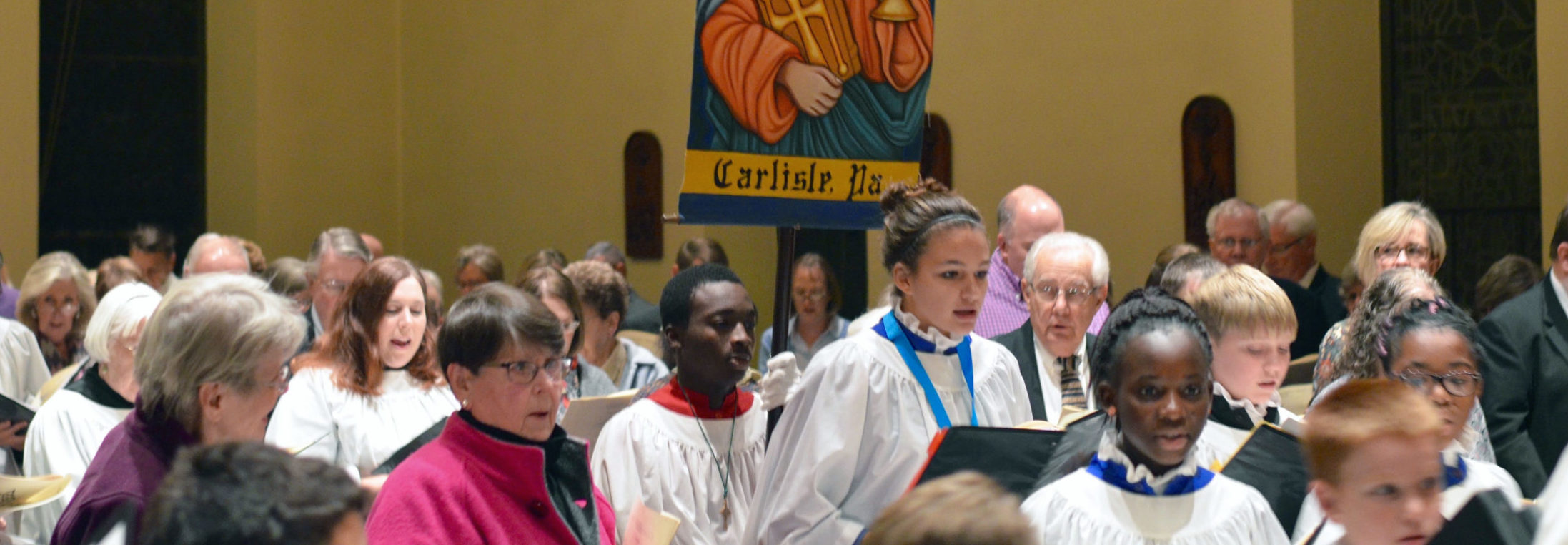In the aftermath of the shooting at the mosques in Christ Church, New Zealand a logistical and utterly poignant question became prescient. What should be done with the pile of shoes amassed outside the doors of the mosque? Should they be left so loved ones could retrieve them? Should they be thrown away so that the area could be scrubbed and cleaned? Should they be gathered and taken as evidence? Should they be collected and placed as a part of the memorial that had been created since that awful day last Friday when the Muslim community gathered for prayers?
There has long been a tradition in the various world religions to remove one’s shoes when entering a holy and sacred space. Those folks that attended the Mosque that day had that tradition ingrained in their very being. It would have been an autopilot motion to slip off shoes, sandals, flats, slippers and then enter the mosque for prayers. In the tragedy and chaos that ensued, the shoes were forgotten, but these empty shoes continue to speak volumes as a reminder of the horror of that day and as a witness to the devotion of these people.
In our Scripture this morning, we are invited into that story in which Moses and God famously have their burning bush tet a tet. Most of us are fairly familiar with this story, made famous by Charlton Heston. One of the most vivid images all of us recall is the burning bush and the words spoken to Moses from that bush, “Do not come any closer. Take off your sandals from your feet, for the place where you are standing is holy ground.” The place where you are standing is holy ground.
It seems fitting that we ponder holiness, and holy ground, as we dig deeper into the season of Lent. What I would like to do with this sermon, is examine the action of God in relation to calling Moses as his leader and see what this reveals about the nature of God, and, of course, the concept of holy ground. If I had a quarter for every time I have been in a Bible study and someone has said, “Well, that was the God of the Old Testament, who was full of wrath and judgement and now as Christians we follow the God of the New Testament who is kind and full of love” I would be a very wealthy woman and would have no need of the Church Pension Fund. As we will see through this dialogue with Moses, the call of God in this pivotal Old Testament story closely mirrors another call story we see in the New Testament of an unknown and lowly person.
God chooses to summon Moses from a mountain, which is usually a good spot to establish a holy place, but the mountain God chooses in this instance is named Horeb. If you know Hebrew, Horeb actually means wasteland. And if you parked yourself at the top of this wasteland, you would not see anything religious. No temples, no rabbis, no nothing. But, God chooses to set this call on Mt. Horeb anyway. The next thing God does is to beckon Moses from the flame of fire. As the readers, we know more than Moses at first, because we are told that God appears to Moses in a flame. However, once Moses becomes curious he moves himself over towards the bush and wonders why this bush was not consumed. In other words, why wasn’t this bush burned up and enveloped in flame?
It is in this moment, we are told that when God sees Moses move towards the bush, God calls out to Moses. It is Moses’ curiosity that encourages this call from God. And then what about this bush? We don’t usually associate bushes with holiness.. But, this bush has a fire in it and God must be trying to tell us something through a fire that burns but does not destroy. And, so we are reminded that the Hebrew word for bush is seneh and that sounds an awful lot like Sinai. We also recall that God ends up leading the people in the wilderness in a pillar of fire as he shepherds them through their exile. It seems that the bush and the fire evoke both holiness, passion, mystery, and a bit of earthiness–it’s a bush after all. God has just turned an ordinary mountain and a run-of-the mill bush into a moment for a divine encounter.
This divine encounter continues to reveal a lot about God–and a fair amount about Moses, too. You see, Moses’ first reaction to the realization that the God of his ancestors is speaking directly to him is to hide his face. However, you will notice that he hides his face initially, but then enters into a real discourse with God about whether or not he is the right one to lead the people of Israel. Remember, Moses even has a speech impediment, but in this conversation, we see that God and Moses have an animated dialogue in which God is doing his best to convince Moses to follow God’s will. And the beauty of this moment is that in the presence of the One Who Can Not be Named, we see an intimacy between Moses and God–a closeness and a concern, not a distance or a judgement. In fact, this moment reminds us once again that from the very beginning God saw the suffering of God’s people and chose to enter into their midst. We are reminded again that there is a continuity between the God of the Old Testament and the God of the new.
Certainly, we now know something about the God of Moses who calls people from ordinary places, even wastelands. We know that this God uses people who are not quite prepared to do what God asks of thm. And, we also know that before God and Moses have their deep and animated conversation, God asserts that Moses must take off his sandals because he is standing on holy ground. What is holy ground and how do we know?
We all know that the church, or mosques, or temples, or synagogues, or shrines are not the only places where the holiness of God can be experienced. Sometimes a beautiful stream of light on the Appalachian trail reveals God’s glory. Sometimes, the tiny fists of a nursing baby point us to the tenderness of God. Sometimes, chopping vegetables and making a good chicken noodle soup remind us of the God who feeds us and nourishes us. But, in this passage, we are reminded and admonished to take off our sandals in the presence of God. The removal of our shoes is an ancient sign of respect. We see that what makes this spot holy is that it is set apart for a special use by God. God’s appearance to Moses establishes this wasteland, Sinai, as a sacred place. Therefore, because of God’s loving purpose to free his people this place becomes holy. Holy ground is a spot in which God’s divine purpose is at work.
As a priest, I am often asked when it it appropriate for young children to start taking communion. Since the Book of Common Prayer was revised in 1979, baptism is entrance into the life of the community of faith and, therefore, children are allowed to take communion as soon as they are able to eat solid foods. I know for some parents this is uncomfortable because they feel that their children don’t understand intellectually that this is the body and blood of Christ. And I agree. But, I know what they do understand. They know this is a sacred and holy meal. I can’t tell you how many times I have had kids scream at the rail, “ I want bread!” or some have even tried to steal the wafers off of my paten. You see, they know that this meal is different than the one at home. There are clues all around that they are standing on holy ground. The vestments, the sharing of bread and wine, the slow progression to the front, the sounds of Amen as this meal is shared. Children are smart and they know something holy is taking place.
Sacred spaces are sacred because of what God has in mind for that holy place. With Moses, the holy ground enabled him to have an animated conversation with God about the purpose of Moses’ own calling–a rare privilege indeed. And Moses took off his shoes before he engaged in this conversation. As I was finishing this sermon, I read that an Anglican Church in Christchurch, New Zealand had purchased fifty pairs of shoes and painted them white and left them on the perimeter of the church yard. Their hope was to signify to their Muslim neighbors their care, concern, and love for this community. A ground that had once been just an edge of a church yard was becoming transformed into holy ground for that space had a dedicated purpose to bring peace and hope and goodwill to a small city that had been pierced by evil. God’s holiness is everywhere, but Holy ground is something which we should seek for it is these holy spaces that God animates us, like he did with Moses, to take off our shoes and enter into holy conversation with the one who is called I Am Who I Am…

